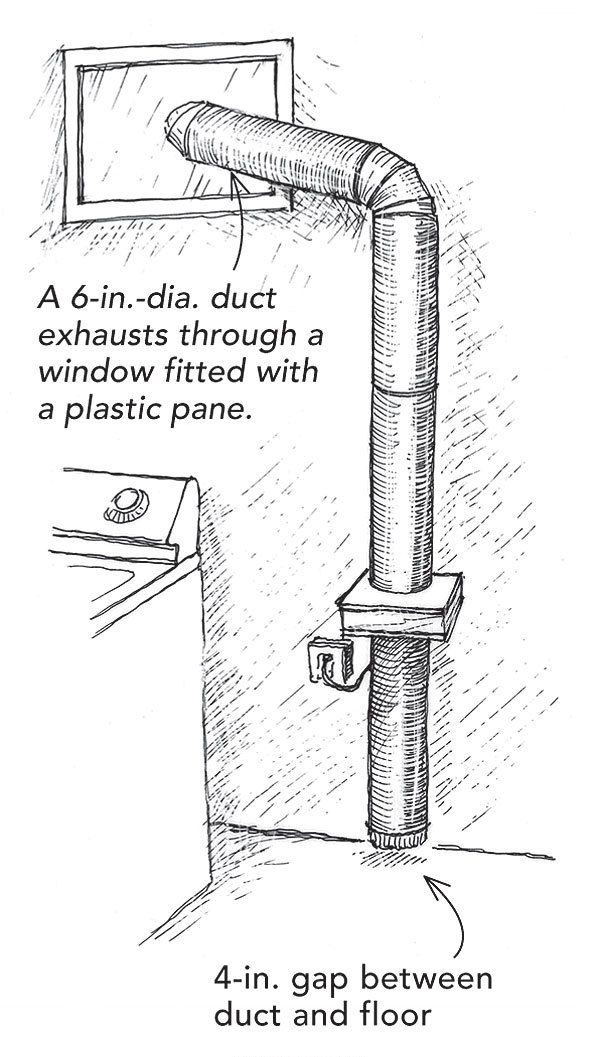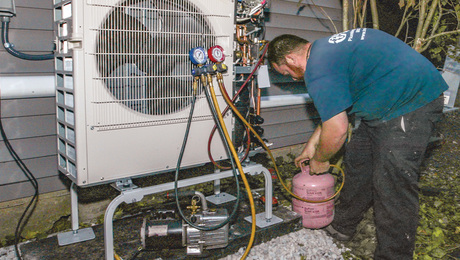
Having given up on the questionable reliability and durability of dehumidifiers for our basement, I decided to try a low-tech, low-cost alternative to deal with summer humidity problems. Opening the basement windows provided some airflow but did not reduce humidity at floor level. A fan in the window moved more air but did not get the air to the areas needed. Then I discovered a better solution.
The key element is a 6-in.-dia. axial fan (Dayton 3VU69 with 3RP14A cord set; www.grainger.com). The fan moves 239 cfm of air while drawing 0.23 amps. (Our defunct dehumidifier drew 7.5 amps.) As you can see in the drawings, the fan is mounted on a 1⁄2-in.-thick plywood tray with a circular cutout that corresponds with the diameter of the duct mounted below it. The tray slides into a 10-in.-sq. plywood box. The inlet and outlet ducts are 6-in.-dia. galvanized, smooth-wall sheet metal. The installation shown here exhausts through a plastic pane in a window. Others I have built exit stud walls, stone walls, or block walls. The exit pipe is screened at the end to keep out bugs when the fan is off, and the inlet is about 4 in. above the basement floor.
This thing works. Mine is the seventh one I have installed. For one house with a major moisture problem, I installed a 10-in.-dia. axial fan. The moisture problem was under control in the house within two weeks.
Dud Carlson, Newark, NY






























View Comments
In a tightly sealed house, any issues with developing negative pressure in the basement? My basement is dry during the Winter, but late Spring, Summer, and early Fall give me fits in Ohio with high humidity in the basement.